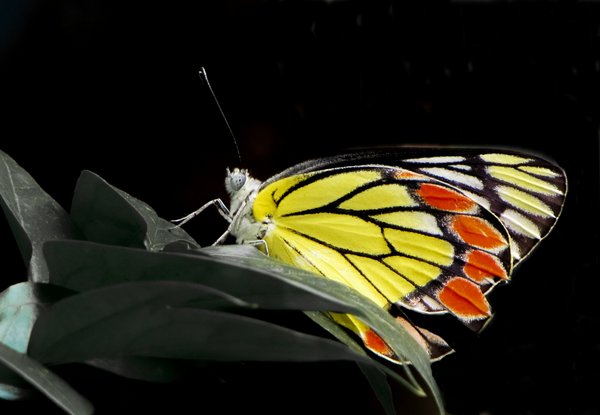 Read this article in French
Read this article in French- Share this article
- Subscribe to our newsletter
Insect species not sufficiently represented in protected areas
Seventy-six per cent of assessed insect species are not adequately covered by protected areas, according to a study published by a team of researchers led by the German Centre for Integrative Biodiversity Research (iDiv), the Helmholtz Centre for Environmental Research (UFZ) and Friedrich Schiller University Jena, also both in Germany, and the University of Queensland/Australia in February 2023. The researchers propose to consider insects in the expansion and new designation of protected areas.
Over 80 per cent of all animal species are estimated to be insects. This species group plays crucial roles in almost every ecosystem. Insects pollinate more than 80 per cent of plants, play a key role in the natural nutrient cycle and in pest control, and are a major source of food for thousands of vertebrate species. However, insects have been historically overlooked by conservation programmes, and they comprise only eight per cent of the species assessed for the IUCN Red List of Threatened Species.
According to the new study, in some regions, insects were better protected than others. Relatively high proportions of insect species received adequate protection in Amazonia, South and Central America, Sub-Saharan Africa, Western Australia and Central Europe, but protection fell short for many species in North America, Eastern Europe, South and Southeast Asia and parts of Australia.
“Insects have often been neglected as a focal group when designating new protected areas,” says Dr Shawan Chowdhury, a postdoctoral researcher at iDiv, the UFZ, and Friedrich Schiller University. “The focus is usually on vertebrates, and their requirements for habitat are usually quite different from insects. For a species group that contains a vast proportion of the animal kingdom and performs diverse ecosystem functions, that is worrying.”
The member states of the UN Convention on Biological Diversity (CBD) have just approved a new Global Biodiversity framework, Target 3 of which calls for at least 30 per cent of terrestrial, inland water, and coastal and marine areas to be effectively conserved through protected areas. According to the researchers, insects should be given much more consideration in the selection and planning of new areas.
“However, in order to implement this globally and to effectively evaluate success, much better data is needed, especially in regions with high biodiversity, such as the tropics, which have so far been completely underrepresented in monitoring programmes,” says Professor Richard Fuller from the University of Queensland. “Citizen science could have an enormous impact on filling the data gap on insect distributions. Scientists and policy-makers must now step up and help with this challenge of identifying sites of importance for insect conservation.”
(iDiv/ile)
Read more on the iDiv website





Add a comment
Be the First to Comment